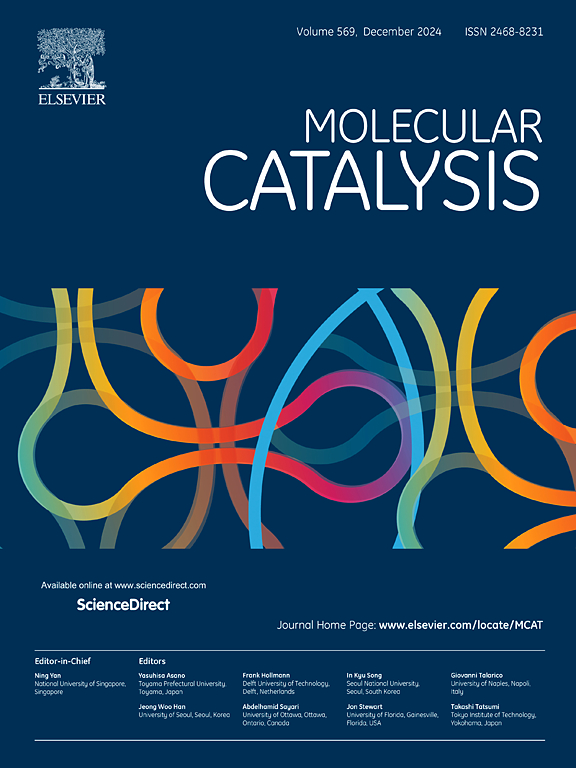Nickel phthalocyanine based porous bimetallic catalysts for high activity CO2 electroreduction over wide potential window
IF 3.9
2区 化学
Q2 CHEMISTRY, PHYSICAL
引用次数: 0
Abstract
Robust electrocatalyst with high catalytic activity and high selectivity over wide potential window is a crucial element for CO2 electroreduction. In this study, combining the advantages of metal-nitrogen-carbon catalyst and bimetallic atomic catalyst, nickel phthalocyanine based porous bimetallic catalyst was synthesized using various porous carbon supports. Benefit from the complementary and synergistic effect of dual active metals derived from nickel and copper, prepared bimetallic catalyst achieved high selectivity and CO Faradaic efficiency (FECO) exceeding 90% over a wide cathodic potential range (-0.57 V to -1.07 V), along with high current density and good long-term stability in CO2 reduction (ECR) under low overpotential conditions of 464 millivolts. Besides, different carbon source carriers (citric acid, carbon, and ZIF-8) supported bimetallic catalyst were detailed, and the citric acid derived carbon source carrier fabricated bimetallic catalyst exhibited best performances with a highest current density (114.2 mA cm−2 at -1.1 V) and a wide cathodic potential range (-0.57 V to -1.07 V) for FECO>90%. This work provides a cost-effective, extendable, and efficient strategy to fabricate electrocatalyst for CO2 reduction to CO, which can meaningfully extend the CO2 electroreduction in practical application.

宽电位窗高活性CO2电还原镍基多孔双金属催化剂
具有高催化活性和宽电位窗高选择性的稳健电催化剂是CO2电还原的关键因素。本研究结合金属-氮-碳催化剂和双金属原子催化剂的优点,采用多种多孔碳载体合成了酞菁镍基多孔双金属催化剂。利用镍和铜衍生的双活性金属的互补和协同效应,制备的双金属催化剂在较宽的阴极电位范围(-0.57 V至-1.07 V)内具有高选择性和超过90%的CO法拉第效率(FECO),并且在464毫伏低过电位条件下具有高电流密度和良好的CO2还原(ECR)长期稳定性。此外,还详细分析了不同碳源载体(柠檬酸、碳和ZIF-8)负载的双金属催化剂,柠檬酸衍生碳源载体制备的双金属催化剂表现出最佳的性能,在-1.1 V时电流密度最高(114.2 mA cm−2),阴极电位范围宽(-0.57 V至-1.07 V)为FECO>;90%。本研究为CO2还原为CO的电催化剂的制备提供了一种经济、可扩展、高效的策略,对CO2电还原的实际应用有意义。
本文章由计算机程序翻译,如有差异,请以英文原文为准。
求助全文
约1分钟内获得全文
求助全文
来源期刊

Molecular Catalysis
Chemical Engineering-Process Chemistry and Technology
CiteScore
6.90
自引率
10.90%
发文量
700
审稿时长
40 days
期刊介绍:
Molecular Catalysis publishes full papers that are original, rigorous, and scholarly contributions examining the molecular and atomic aspects of catalytic activation and reaction mechanisms. The fields covered are:
Heterogeneous catalysis including immobilized molecular catalysts
Homogeneous catalysis including organocatalysis, organometallic catalysis and biocatalysis
Photo- and electrochemistry
Theoretical aspects of catalysis analyzed by computational methods
 求助内容:
求助内容: 应助结果提醒方式:
应助结果提醒方式:


